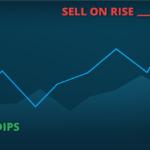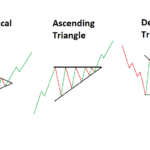While the trading of goods, coins, and equity, has been around for centuries, the trading of CFD’s or contracts for difference is an extremely recent financial development, established in London as of the early 1990s.
In order to understand why it was developed, one first must properly understand what CFD trading is.
What is a Contract for Difference?
A contract for difference is a contract drawn up between the “buyer” and “seller” of a particular assetA stock, commodity, currency, index or any other entity one may trade or invest in. or equity, that allows the two parties to speculate on the asset’s movement by agreeing on a SELL price at a later given date.
What makes this arrangement different from other forms of financial trading is that a physical transfer of the asset’s ownership never actually takes place.
Thus, the parties are able to benefit both from a high amount of leverageAn investment provided by a broker or other provider alongside an investor’s investment, enabling ..., as well as the fact that the trade is not taxed since there was no actual sale – just speculation.
Those Ambitious Brits
It was due to these distinctive benefits that the development of CFD’s first came about in the major trading houses of London.
Contracts for difference were utilized by professional traders as a form of hedging against the London Stock Exchange.
The two figures accredited with the practice’s original invention were Brian Keelan and Jon Wood, both of whom were traders at UBS Warburg.

In the early ’90s, the use of contracts for difference was a practice maintained only by institutional traders for the cost-effective hedging which it enabled.
It was only in the late ’90s that CFD trading caught on and became common practice amongst retail traders as well.
CFDs Catch On
The first retail trading company to adopt the practice was GNI, Gerrard & National Intercommodities.
Soon to follow were IG markets and CMC markets in the year 2000. It was then that the usage of CFD’s began to expand, and investors began drawing up contracts for difference not just on the London Stock Exchange, but on various other stock exchanges, stocks, commodities, and indices as well.
In 2002 the trading of contracts for difference was introduced in Australia.
In 2007 the Australian Securities Exchange took this over the counter form of trading one step further and introduced exchange-traded CFD’s.
Today, CFD trading is available in many countries around the world, including Hong Kong, South Africa, Canada, and Japan to name a few.
The practice however it is illegal in the US, due to the country’s regulatory rules on over the counter trading.











